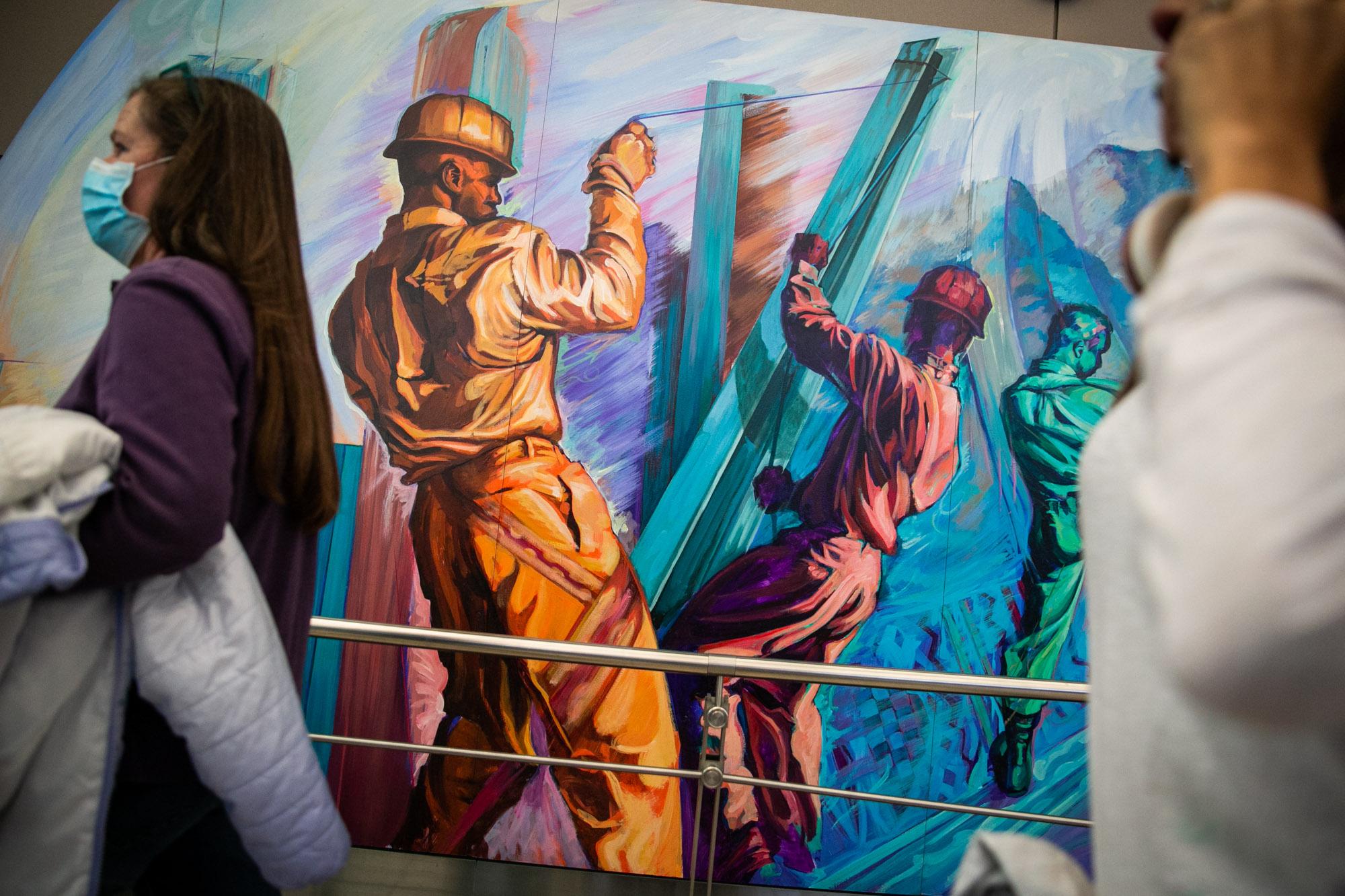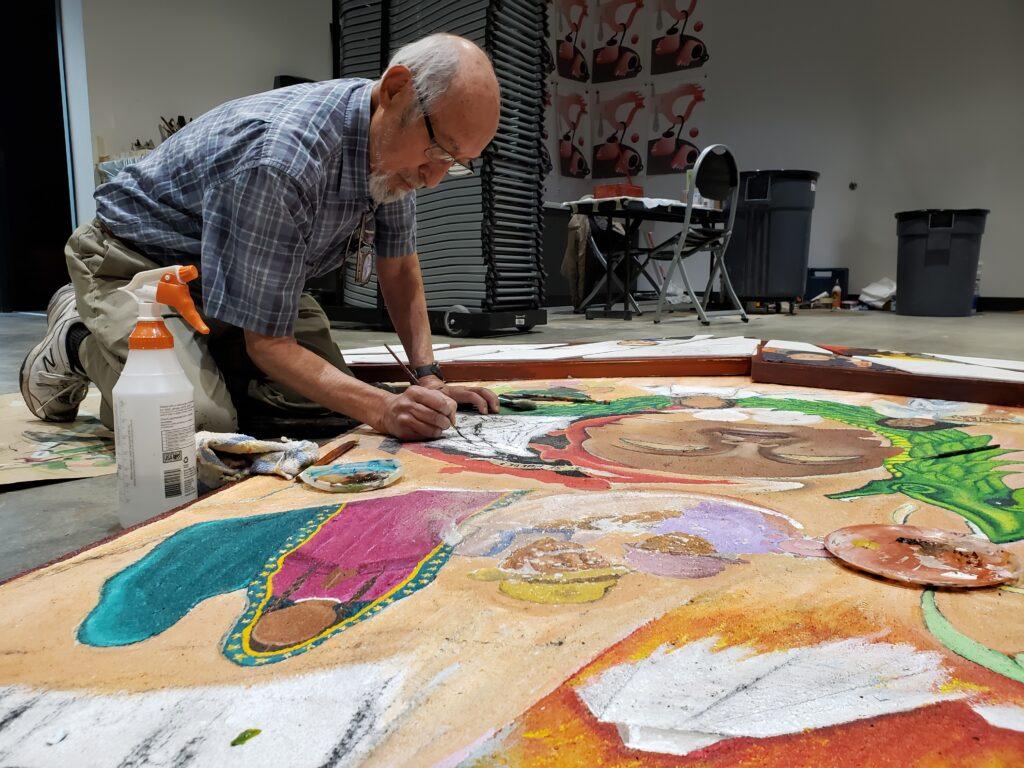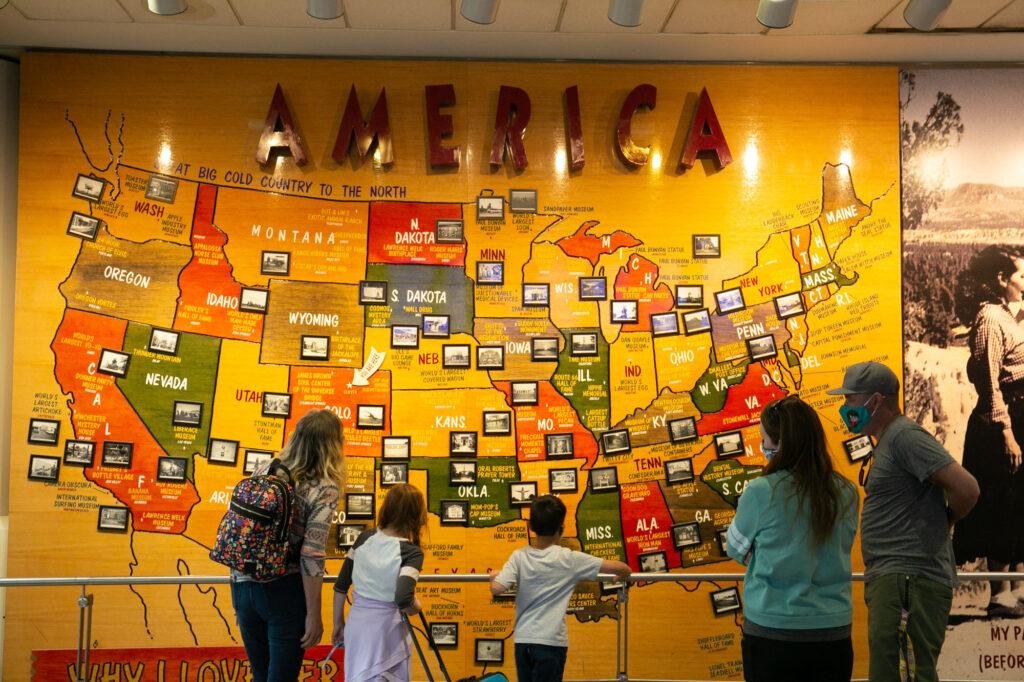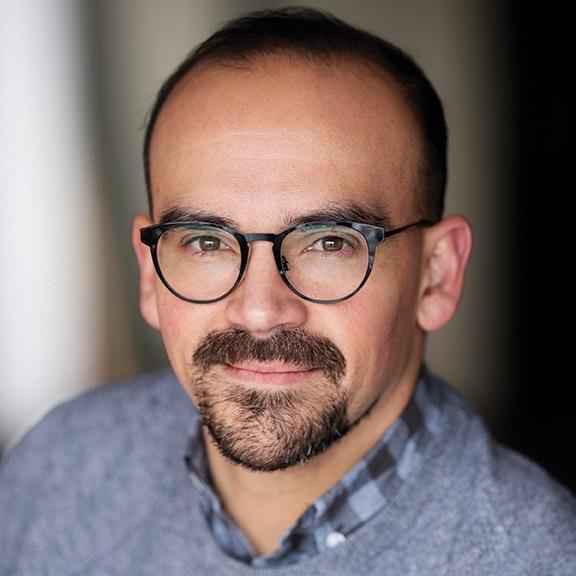
Colorado muralist Leo Tanguma pauses for a moment when he considers how his art hanging at DIA is received. He smiles. He’s heard all the conspiracy theories before. Some say his large-scale works hint at mass extinctions, new world totalitarian governments, the illuminati, even the origins of COVID-19.
None of it’s true, he said.
“It’s a humorous feeling that I have from those idiots, right? Because there’s nothing conspiratorial about my murals,” Tanguma said between painting sessions at a gallery at the University of Northern Colorado recently.
“Those people when they speak out suggest that there's numbers of them. But in fact, there's not that many numbers, it's just that these conspiratorial people maybe have nothing else to do.”
In September 1992, Tanguma was commissioned by a panel of artists, civic leaders and community members. His murals take on themes of war, peace, and the diversity of human life. One is a bright depiction of children dressed in traditional folk costumes from around the world, gathered around a fallen soldier. A second panel depicts a soldier carrying a sword and a gun while a group of refugees huddle around him. Another piece addresses the destruction of the environment. They usually hang in the main terminal, though they’re in storage temporarily during DIA’s Great Hall expansion.
Tanguma’s experience as a subject of rumors speaks to the unusual nature of the art at Denver’s airport: It doesn’t shy away from controversy, and to some people, it’s downright weird. But the airport wants more of it. And they want a Coloradan to be the first to have their work built and showcased in new spaces being created by a gate expansion that’s underway.

For Tanguma, himself a decades-long resident of Colorado, being chosen to display his work at DIA was a great honor. With millions of people passing through the airport’s halls, he gets a massive stage to share his passions for Mexican American culture and the struggle for equality for all people.
“There were times I couldn’t believe my good luck, right? Because I know Denver has some wonderful artists — some incredible artists — and to be selected from those groups is a real honor to me,” he said.
More money is coming. That means more art.
Before DIA was built, city officials decided that 1 percent of the total cost of every big construction project in Denver would be set aside for public art. The airport initially cost about $3 billion dollars, which meant significant resources for an art fund. Additional improvement projects at DIA added money, and the airport now boasts 38 pieces in its collection.
DIA is again undergoing expansion. Thirty-nine new airplane gates are being built at a cost of about $1.5 billion. Because of the 1 percent for art rule, the growth means there will be a lot more money for new art.
Whoever is chosen to display their work at DIA will have some big hooves to fill. Mustang, known by nearly all who see it as Blucifer, is DIA’s most infamous piece of public art. It’s been the subject of countless social media posts, tattoos, pieces of fan art, even songs.
It has its share of controversy. It killed its creator, Luis Jiménez. And despite assurances from airport officials, rumors spring up every few years that Blucifer will be taken down.
Heather Kaufman, DIA’s director of arts and public events, said, “It’s been a rumor ever since it was installed — from a group a long time ago.” But she said Blucifer is here to stay.
'I’m all for the weird stuff'
To the people in charge at the airport, “weird” is sort of the point, whether it’s Blucifer or works by other artists like Tanguma.
“I think the quirkier the better,” Kaufman said. “I think if it's unique, we love our conspiracy theories around the art or the airport in general. It's an opportunity that we get to educate and have educational tools around the conspiracy theories. And it creates that conversation around our art and it's what we're known for.”
Jesse Yanez recently made his way through the airport from Odessa, Texas, and found himself standing near a grinning gargoyle near the Southwest Airlines baggage claim.
“I’m all for the weird stuff,” said Yanez, in town to watch a Broncos game. “I think it actually encourages people to do some research and read. Otherwise, most people wouldn’t even read, if it wasn’t something that piqued their interest.”
Not all of the art at DIA is strange or controversial. Michael Hart stopped with his son to admire a mural in the main terminal called “America, Why I love Her.” The mural acts as a postcard from places all over the United States. It was inspired by road trips the artist took with his family.

For Hart and his 8-year-old son, who return to the mural each time they travel through DIA, it reminds them of where they’ve been and where they’re going.
“As we get done here, we’ll go through the different places that he’s been,” said Hart, who lives in San Mateo, California, looking over at his son. “We’ll go through all the different cities that he’s been, and he remembers some of it, and he won’t remember some of it.”
Coloradans will be central to the new art at DIA
The people who are deciding what artists will get to display pieces in the new wings are in the thick of their work. A panel made of community members, artists and civic leaders has whittled down an initial pack of 92 applications from artists to just five. There will be several new works, when all is said and done, much of it suspended from ceilings in the new concourses.
It’s likely the new works will come from artists all over the world, though the panel has decided that a Colorado-based artist will be the first to have their work built and shown.
Airport officials hope travelers will be able to see that first art addition, set for the B Concourse, some time in 2023 or 2024.
That a Coloradan will be the first to be chosen to build and show their art in the new additions at DIA is important, Kaufman said.
“I really think our art is reflective of our historical building of Colorado, the uniqueness to Denver,” she said. “And this should follow suit for sure.”
For Tanguma, himself an Arvada resident, the chance for Coloradans to make work that millions of people from all over the world see each year is life-changing.
“It’s a feeling of fulfillment. So people traveling from there can see themselves portrayed in some way and I am sure they appreciate what they’re seeing,” he said. “They’re seeing themselves reflected in the murals. And so that’s what I’ve been trying to do all my life.”






